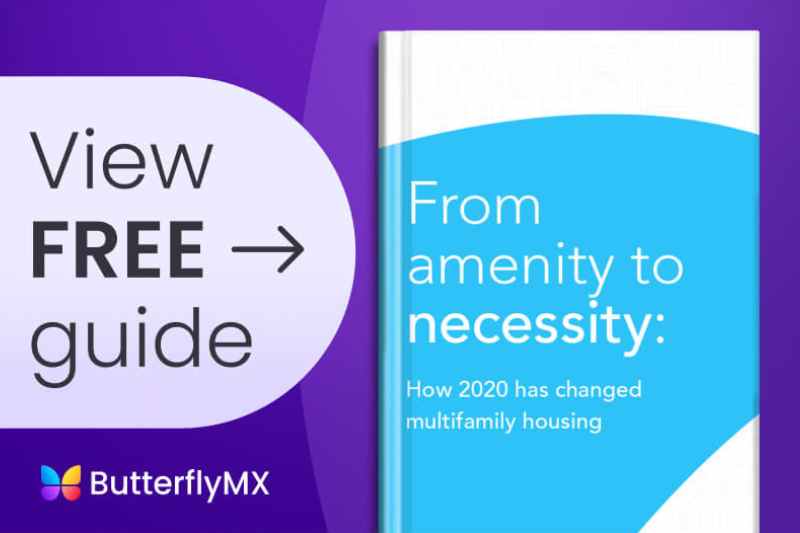Key takeaways:
- Avoid car and ridesharing options at your green building and encourage residents to bike, walk, or use public transportation, which is more environmentally sustainable.
- Before committing, please inform your current residents about their preferred transportation amenities. Many of today’s renters are ready and willing to use more sustainable transportation.
- Apartment car sharing can be a great luxury amenity for residents in urban areas who want to use a car occasionally, not every day.

The future of real estate is creating more sustainable buildings. So, more and more multifamily properties offer transportation amenities, from bike storage to EV charging. One of the most interesting new amenities is apartment car sharing.
But is car sharing a worthwhile investment for urban properties? Whether you’re considering adding new amenities or just curious about the latest trends, this guide is for you.
This post covers everything you need to know about apartment car sharing, including:
- What is car sharing and how does it work?
- Which car share is best?
- Pros and cons of apartment car sharing
- Alternatives to car sharing
What is car sharing & how does it work?
Apartment car sharing is a new amenity that provides residents with on-demand access to shared vehicles provided by the property. Depending on the property’s car share program, residents can reserve and rent cars for a fee or for free. Apartment car sharing is a highly attractive amenity to residents of big cities where owning a car can be too much of a hassle.
Car-sharing services in a multifamily community can work in multiple ways.
To set up car sharing at your apartment, you will need:
- Vehicles: The location of your property will determine how many cars you need. For example, residents in New York City don’t need a car to get around every day so that an NYC car-sharing program won’t need as many vehicles. But if your residents need to drive daily, you may need more cars.
- Parking: Designate specific parking spots for car-sharing vehicles. It’s important to ensure residents know where to pick up and return the cars for ease of use. Choose a covered parking spot protected from the elements to make car maintenance easier.
- Car maintenance: Consider the weather in your area. Will your residents need snow tires? How will you make sure the cars stay clean and well cared for? Car sharing isn’t a good investment if vehicle maintenance is out of your budget.
- Reservation system: Once you have the cars taken care of, your next priority should be making them easy for residents to use. You can manage the reservations manually, so residents have to check out keys from the front desk. However, the most efficient option is to use an online booking system and mobile app. There are many amenity reservation apps on the market today.
If you’re feeling overwhelmed, don’t worry. You can also choose to collaborate with an outside company. Car-sharing organizations like ZipCar and WeGo will take care of everything for you.
Learn how to implement sustainable building for your property:
Which car share is best?
Your property’s best car share option will depend on your building’s needs and budget. Starting your private car share is a lot of work. However, you don’t have to share the profits with another company.
We recommend comparing the costs of managing cars versus using an outside company. If you’re not sure that residents will want to use the vehicles, buying cars yourself may not be worth it.
Partnering with another company allows you to test the waters and see if your residents will use car-sharing services. This can help you determine whether it’s worth investing in long term.
Car share companies you can partner with at your multifamily property include:
- Zipcar
- WeGo
- ReachNow
- Sway
Pros and cons of apartment car sharing
For apartment residents in big cities, having access to a car isn’t a daily essential. However, some activities — like a weekend hike or bulk grocery shopping — are much easier with a vehicle. Apartment car sharing isn’t right for everyone but is also highly valuable in the right contexts.

What are the benefits of car sharing?
- Improve resident experience: Car sharing is more affordable than on-demand car options like taxis, Uber, or Lyft. Residents will appreciate saving money on travel and car ownership.
- Extra space: When residents participate in car sharing, they don’t need their own parking spaces. This frees up space in your parking garage that you can rent to residents for storage, which creates a new revenue stream.
- Environmental impact: As the real estate industry adapts to climate change, residents are seeking eco-friendly apartment living. Car sharing can provide residents with access to electric cars, which have a lower carbon footprint.
- Additional property income: Your property can profit from car sharing in various ways. Residents often pay more for apartments that include amenities like car sharing. Not only can you increase your rental income, but you can also monetize the car sharing itself by charging an amenity fee.
What are the disadvantages of car sharing?
- Cars aren’t the most eco-friendly: Electric cars are much better for the planet than gas-powered vehicles. However, personal car use is still not the most eco-friendly transportation method. Even if you do offer residents access to shared electric vehicles, they would still contribute to road congestion.
- Operating costs: Buying and maintaining vehicles is expensive. If your residents don’t see the value in the service and aren’t willing to pay for it, you may lose money. To avoid this, budget for your area’s costs and research car-sharing data.
- Residents may not use it: In walkable cities, residents are used to getting around without a car. Before investing in car sharing, ensure your residents will actually use it. Car sharing won’t be considered a valuable amenity if they prefer biking, walking, or public transit.

Alternatives to car sharing
Apartment complexes anywhere can benefit from car sharing. However, your residents (or your budget) may not agree. In that case, you can offer your residents other transportation options to reduce their need for a personal car.
Instead of car sharing, consider some of the following alternative transit amenities:
- Community ride-share programs: Encourage your residents to carpool to reduce car pollution. Message boards are a great way to help them connect and set up a ride-share program within your community. This is a free way to encourage more eco-friendly transportation.
- Collaborate with rideshare apps: Rideshare apps like Uber and Lyft have become more popular in recent years. Improve your residents’ rideshare experience by setting a designated pick-up and drop-off location at your property. While rideshare apps allow on-demand travel for your residents, they have a serious environmental impact and aren’t a good solution.
- Create a bike-friendly community: Biking is a pollution-free transportation option, just like walking, but faster. However, biking around cars can be dangerous. Make your community bike-friendly by offering easy storage and bike lanes where necessary. Earn additional income for your property with a bike library or rental bike storage.
- Transit-oriented development: Improve access to public transportation to contribute to making your city more sustainable. Encouraging residents to use nearby public transit and prioritizing sustainability all help improve transit-oriented development in your area.







